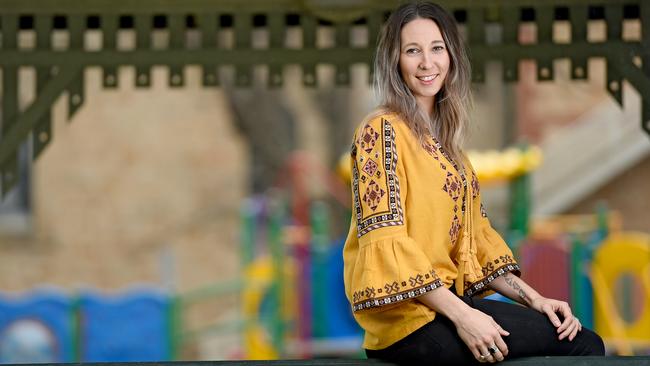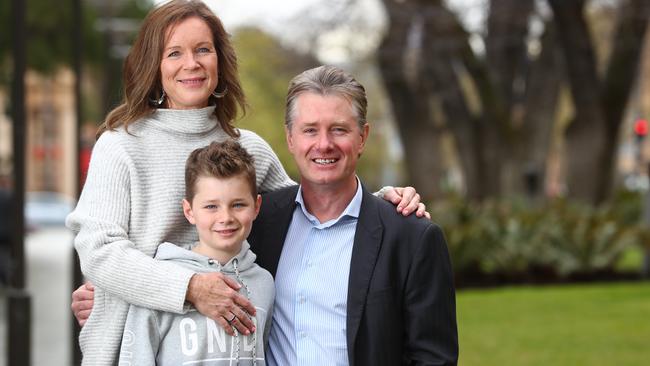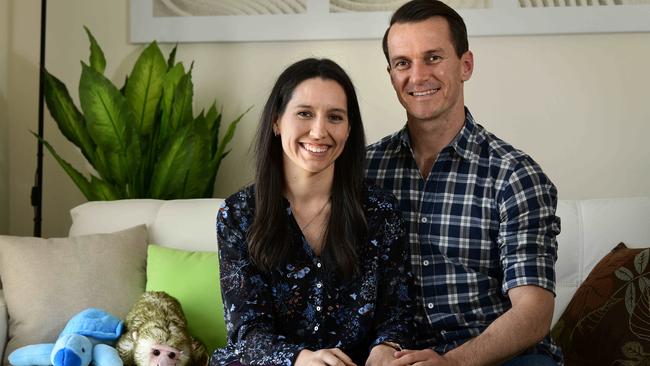Desperate need for foster carers in South Australia, as number of children in state care reaches 3680
HUNDREDS of children need loving homes but many South Australians are reluctant to open their doors. Lauren Novak examines the desperate need for foster carers.
- Audit reveals desperate need for more foster carers
- Foster care payments to be extended until age 21
- More foster families going through Transfer of Guardianship process
- A hundred children and parents living in motels each night
THERE are 830 more children in state care today than there were four years ago – but fewer than 80 extra foster families have come forward to help them.
Child-protection authorities are being forced to remove more and more children from unsafe parents, and the need for foster carers has reached desperate levels.
The shortage of family-based options means hundreds of children are ending up in rented apartments or state-run homes in the care of paid workers. \The State Government and welfare organisations are running recruitment drives to convince more people to put their hands up for the vital job but the results of a new survey – obtained by the Sunday Mail – show why many have been put off.
Connecting Foster and Kinship Carers SA quizzed 165 carers on their experience to find out what must be improved to encourage more people to sign up.
Most felt they were well-matched to children placed in their care, and that they received enough training and further support when needed. But one in four would not recommend being a foster carer to family or friends.
Almost 40 per cent felt they were not kept informed about their entitlements, such as paid allowances or their rights. About half wanted more information about a child’s background before taking them in.

In the lead-up to the March election, Child Protection Minister Rachel Sanderson said foster carers were leaving the system because they felt disrespected, and she pledged to change that approach.
A key barrier for many is fearing they do not have the time to devote to a child, but it is not only full-time parents who are needed.
Those willing to take children for short periods – from an overnight emergency to regular weekends or a few months – can give other carers a break or allow birth parents time to make their homes safe again. People with specialist skills to manage complex behaviours or disabilities are also needed and authorities can offer training. Singles, same-sex couples and families with biological children are encouraged to apply and carers range in age from mid 20s to 70s.
Connecting Foster and Kinship Carers SA chairwoman Megan Hender acknowledged that “by opening their homes to these children, (carers) save the state many tens of millions of dollars every year”.
It can cost more than $600,000 a year to house a child in a state-run home, compared to about $48,000 in a foster family.
Ms Sanderson said the state “urgently” needed more foster carers willing to “dedicate their lives to looking after young people who have experienced hardship and neglect”. “There is no doubt foster carers are special people,” she said.
There are, indeed, awe-inspiring examples of dedicated carers in SA. In total, the 165 survey respondents had cared for more than 1500 children. This included eight households which had taken in more than 50 children and one which had cared for as many as 134. Six families had been caring for more than 25 years.
AnglicareSA supports about 400 foster carers and 450 children, including those featured in today’s Sunday Mail special report.
This month, it launched the Moments that Matter campaign to attract a diverse cross-section of South Australians to foster care.
AnglicareSA CEO Peter Sandeman said there are many people “who have a lot of love to give but may not think they would be considered suitable as foster carers (but) we need our foster care community to be as broad and diverse as the general SA community”.
The former Labor Government spent $9 million in a bid to recruit 130 new foster carers. It sparked an influx of interest but it is unclear how many queries translated to new, registered carers. A high attrition rate means overall numbers have remained relatively stable.
Latest data provided by the Liberal Government show there are 1027 registered foster households in SA, another 589 kinship carers and 120 households which have taken in children known to them. Almost 500 children live in state-run homes or emergency accommodation.
Case study 1

Grace Tohl, 28
OVER the past three years, Grace Tohl has welcomed 14 children in state care into her home.
She began offering short-term care to children who needed a home in emergency situations and, these days, she is a full-time single foster mum to three youngsters aged 18 months, three, and eight.
While Ms Tohl concedes their backgrounds mean they may “have more challenges than the average child”, she insists they “completely light up your life”.
“They bring so much joy and you learn a lot from them and the resilience that they show,” the small business entrepreneur says.
“It’s just something that I always wanted to do. I knew I was capable of doing that. I knew it was the right thing to do.”
Ms Tohl, who does not have any biological children, gets a break from the hectic household every six weeks when another foster family takes the children for a respite weekend.
She urges anyone who has considered fostering to find out how they could play their part.
“I wasn’t that aware of all the different options and types of care you could do and how it could fit into your lifestyle,” she says.
Case study 2

Rebecca and Matthew Johns, both 48, and son Jesse, 10
ONE weekend each month, the Johns household is filled with the sounds of two young boys playing on the trampoline and watching kids’ movies.
Rebecca and Matthew Johns began offering respite care to a seven-year-old boy two years ago and he’s “settled straight in” to life with their 10-year-old son, Jesse.
“Jesse is an IVF child and we had a lot of trouble getting him so it was going to be difficult to have another,” says Mrs Johns, who manages corporate apartments.
“Obviously, he would love to have a sibling. We thought we had a lot to offer (a foster child) from a family perspective.”
To preserve the boy’s privacy, the couple don’t know the details of why he was taken into state care but they were given plenty of information about his likes and dislikes and what he may struggle with.
“He’s a lovely little boy. We drop everything for that weekend that he comes and make it our fun weekend,” Mrs Johns says. “It’s very rewarding to have a part in another child’s life.”
Case study 3

Mark and Kristen Waters, 36 & 33
AFTER moving into a four-bedroom home, Kristen and Mark Waters had room for others.
“We knew that we had the space in our home once we got our mortgage, and we knew there were lots of kids out there who needed it,” teacher Mrs Waters says.
The couple have since welcomed five foster children into that home and now provide respite care for two primary school-aged sisters every second weekend.
“There was a bit of nervousness … but it was great to do respite care at first to make sure it was the right thing for us,” says Mr Waters, a former business analyst who is now studying physiotherapy.
“The girls love sport so we’re always out the front playing in the park. They wanted to run in the City-Bay.
“I’d never run it before but I was inspired by them.
“Something that surprised me was that during the week you can get a bit stressed out but whenever the kids are with us I don’t think about work at all. It’s really such a joy.”
Mrs Waters said there were plenty of “flexible options for anyone who wants to try it – and I hope people do”.

